
By: John Kioko Masila, PhD
“Science Jamming” about Collpas on the Sucusari
Why do we and other animals eat earth? More specifically, why do animals in the Western Amazon eat earth from certain places and how does this behavior affect them and the forest? What do people (scientists and locals) know about this practice? How could answering these questions be useful for wildlife management and forest conservation? These were some of the main questions we explored during a field visit to a mineral lick for tropical ecology and conservation science during our excursion to the Sucusari River basin. We spent a cool Amazonian afternoon talking about the known science, local ecological knowledge and remaining mysteries of the practice of geophagy with researcher and guest lecturer Brian Griffiths (Ph.D. student at George Mason University and Fullbright Fellow) and local hunter Victorino Rios.
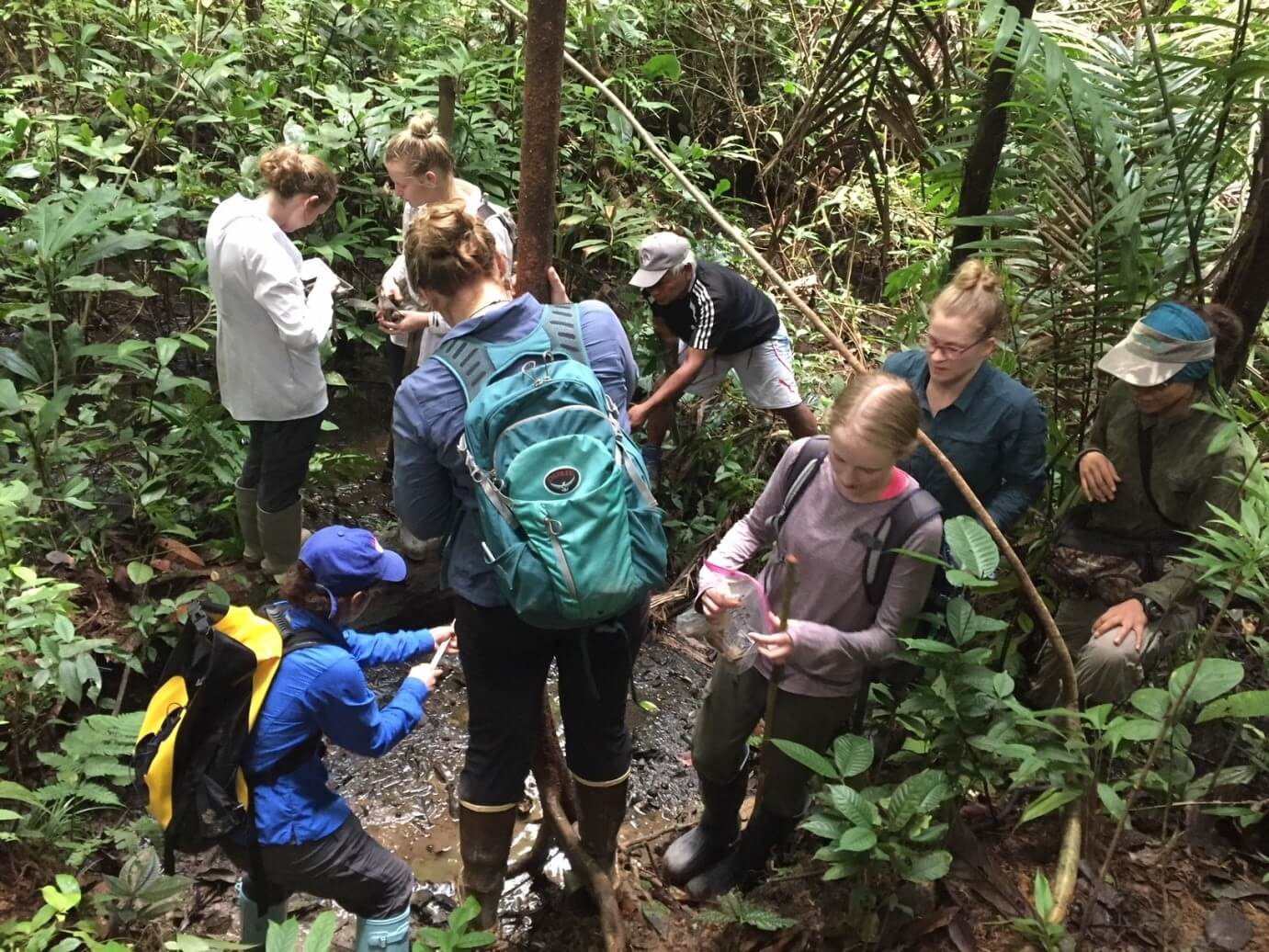
We get up close and personal with a mineral lick near ExplorNapo Lodge, Loreto, Peru. Photo courtesy of Emily Waynes
Geophagy, or eating earth, is a behavior that some animals (including people!) do in several places around the world. In the Western Amazon, this occurs in particular areas known as mineral or clay licks, which can range from small depressions where visiting animals have exposed the earth through their licking action to large “watering holes” or exposed river banks several meters across. Several reasons have been proposed to explain this behavior, which as far as science knows, only plant-eating animals display: detoxification of secondary compounds in plants, self-medication for stomach ailments, mineral supplementation of diets (particularly sodium salts… which are naturally found in low levels in the Western Amazon), among others. Regardless of the reason, there appears to be a strong enough tie that a diverse array of birds and mammals like tapir, peccaries and porcupines regularly visit these areas. According to Brian, some tapir may travel as far as 10 km to visit a mineral lick every 3-4 days. And what’s more, several of these usually solitary animals may congregate at the same time, supporting the idea that whatever the reason may be, collpas represent an important resource for them. In fact, access to collpas may limit local populations of certain animals.

Researcher Brian Griffiths explains fresh peccary tracks found near the mineral lick
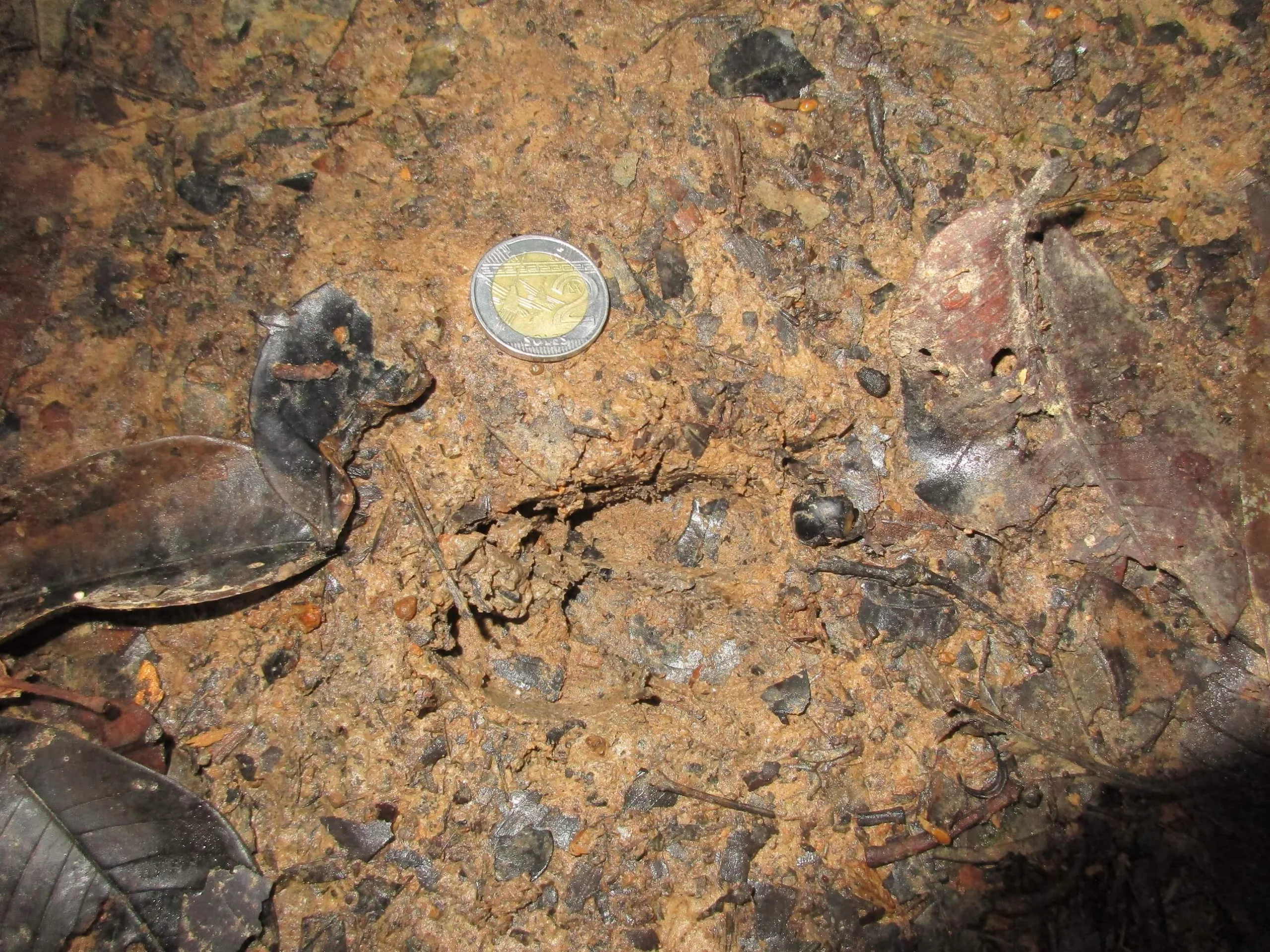
Sajino or Collared Peccary (Pecari tajacu, previously Tayassu tajacu) tracks Victorino found show it was moving to the left
These collpas are also important resources for people (and other carnivores) who traditionally depend on these animals, so it is not surprising that local Maijuna hunters know a lot about where these places are located and what animals visit them. Understanding the location of these collpas as well as the local knowledge and traditional and current hunting practices around these collpas may be key to assessing or proposing conservation practices in areas with hunting like Sucusari. As part of his research into the sustainability of subsistence hunting in the Peruvian Amazon Brian is working together with local hunters like Victorino to identify collpas (80+ and counting!! Yikes!), monitor them with camera traps, and assess hunting practices around them.
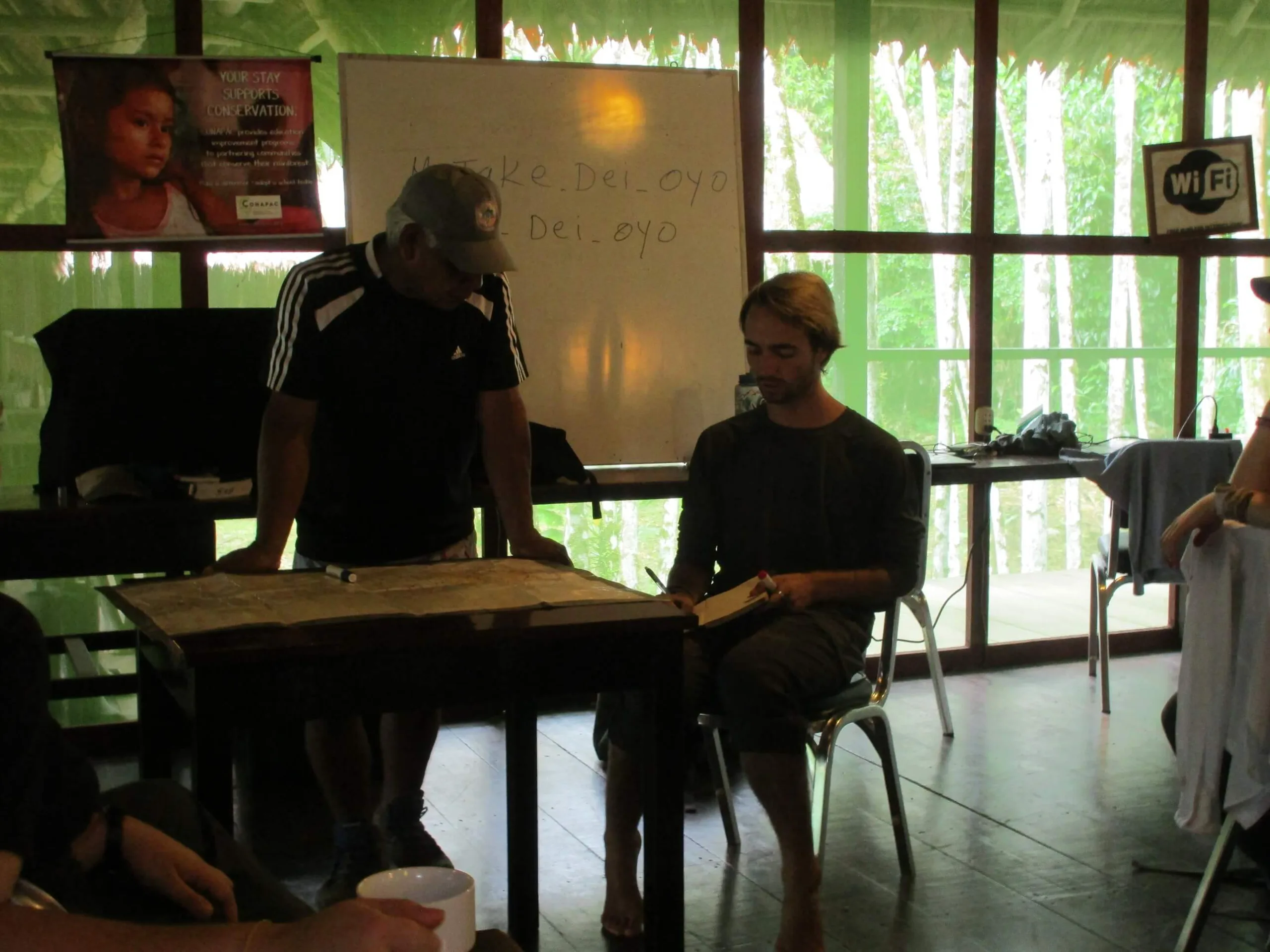
Victorino and Brian demonstrate how Brian interviews hunters to learn about hunter decision making
It is quite an interesting marriage of local ecological knowledge with western scientific methods that is yielding many answers and even more questions on mineral licks, geophagy and other animal behavior… as our class discovered. For example: Why are collpas not everywhere? What is special about collpas? Do porcupines display offensive and not just defensive behavior (apparently they may!)? What would dare to hunt porcupines? (For answers to some of these questions, keep a lookout ahead to some of Brian’s short publication notes). These are the questions on the edge of science that Brian invited us to think about brainstorm about how to start answering them, “science jamming” about collpas, as he likes to say.
After our “science jam” our students capped their field visit by retrieving camera trap data cards and helping Brian collect data on the mineral lick we visited, measuring its dimensions and collecting soil samples for mineral content analysis. With this we hope we added our little grain of salt to another project that he hopes will address the continuing mystery of collpas: Are mineral licks unique places and do they offer special resources found only there? We’ll just have to wait to find out.
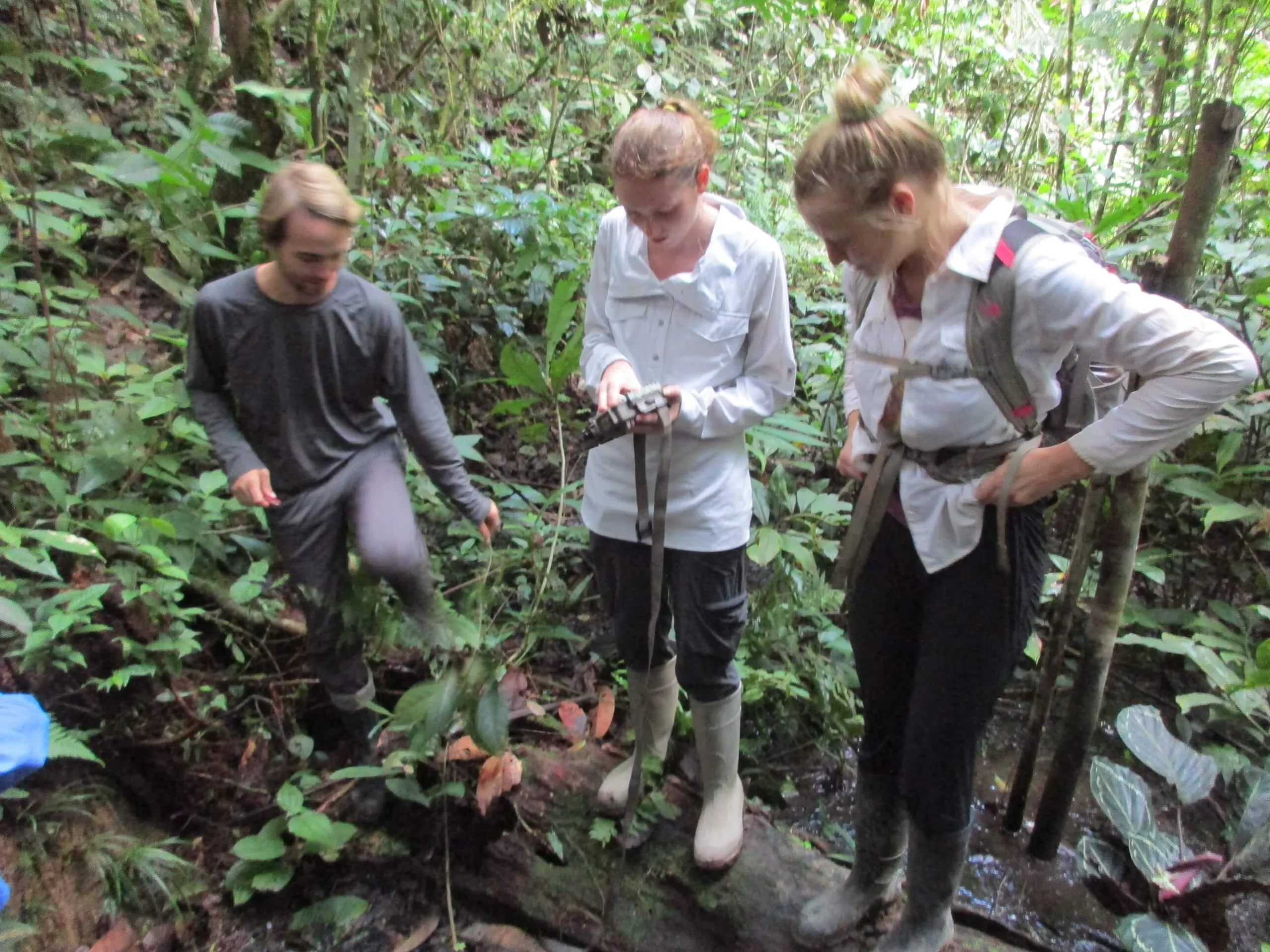
Claire Mohney and Katie Brown help Brian reset a camera trap
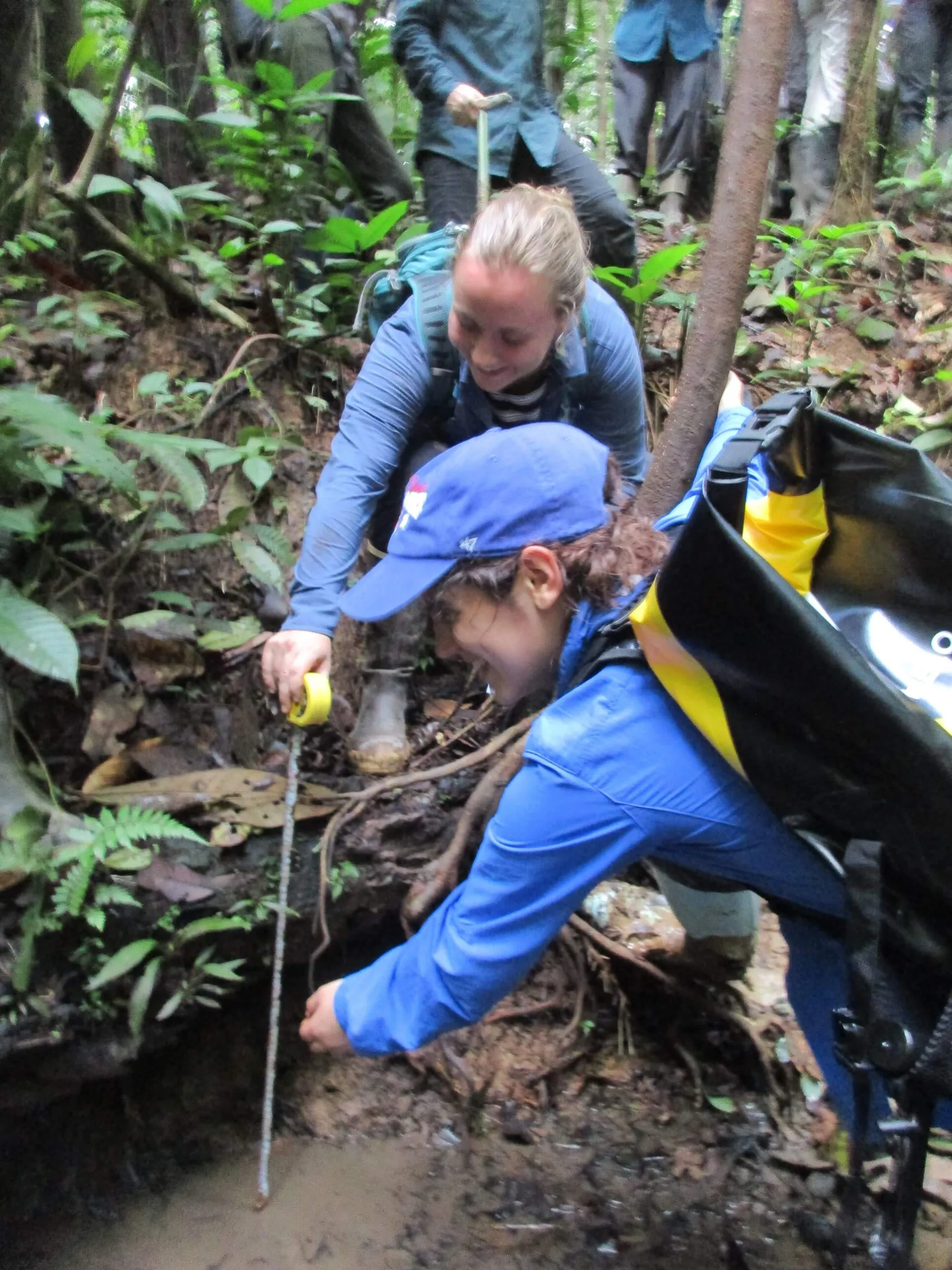
Julie Gerritt and Mary Erdman measure the depth of a small clay lick
Related Posts


Alumni Reflections: Stories of the Return to Kenya
